Museum of the Origins of Man
WOMEN WITH VARIOUS TYPES OF TWO-FACED HEADS IN POST-PALEOLITHIC SCULPTURE
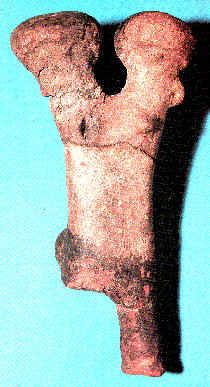
Fig. 8A26) Anthropomorphic two-headed terracotta sculpture.
Depiction of a naked woman (Venus) with two heads.
This sculpture has been found in various pieces, without a leg, and has been restored.
It represents a woman with two heads, and depicts a deity.
The shape of the heads reproduces the shape of the hair, enriched by ornamental motives, traced with few "V" lines also present in the dorsal part. The elements of the face are not represented; the pointed breast and the globose buttocks protrude from the rectilinear body of the figure.
The terracotta statuette was covered with a fine engobe, blackish in color, of which traces are found in the inferior part of the body and on the left head (See:AFFINITIES BETWEEN THE PALEOLITHIC VENUS WITH TWO HEADS OF THE BALZI ROSSI (LIGURIA) AND THE NEOLITHIC VENUS WITH TWO HEADS OF CAMPO CERESOLE (LOMBARDIA, ITALY, EUROPE). by P. Gaietto, 2002, Paleolithic Art Magazine).
Height: cm 14.
Origin: Campo Ceresole near Vho di Piadena (Lombardy, Italy). Diggings 1976.
Material culture: Neolithic.
Dating: end of 5th millennium BC.
Location: Archaeological Superintendency of Lombardy, Municipal Archaeological Museum Antiquarium Platina di Piadena.
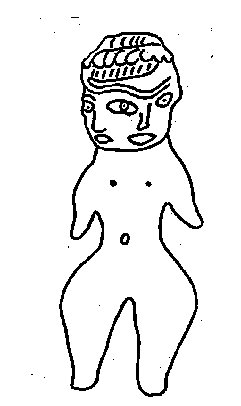
Fig. 8A7) Anthropomorphic two-faced ceramic sculpture (drawing). It represents a naked woman with two-faced head. By Mexican archeologists, these two-faced Venuses are interpreted like " symbol of a double fruit or of the principle of the duality, at the roots of the mesoamerican religious philosophy, to which is attributed propitiatory character ".
Size: from 6 to 13 cm, on average cm 10.
Origin: Tlatilco, Mexico.
Dating: from 1100 to 500 years BC.
Location: National Museum of Anthropology, City of Mexico, Mexico.
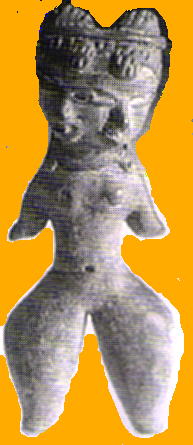 Fig. 8A8) Two-faced anthropomorphic ceramic sculpture. It represents a naked woman with two-faced head (see caption Fig. 8A7).
Fig. 8A8) Two-faced anthropomorphic ceramic sculpture. It represents a naked woman with two-faced head (see caption Fig. 8A7).
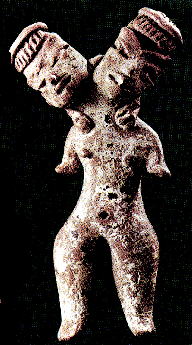 Fig. 8A9) Bicephalic anthropomorphic ceramic sculpture, representing a naked woman with bicephalic head (see caption Fig. 8A7).
Fig. 8A9) Bicephalic anthropomorphic ceramic sculpture, representing a naked woman with bicephalic head (see caption Fig. 8A7).
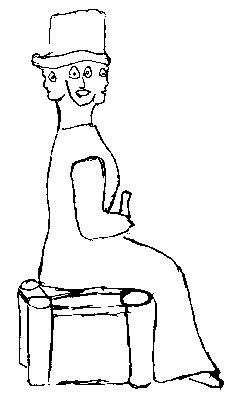 Fig. 8A14) Anthropomorphic four-faced sculpture in bronze (drawing). This sculpture looks like a late 19th century English figurine, almost " Liberty ", both for the dress and the hat; instead it is a four-faced head deity. The civilization that produced it certainly had great wealth and culture. It was found associated with a male deity (Fig.5A22) having a four-sided head, and equally elegant. We think that these two bronze sculptures were made by the same artist.
Fig. 8A14) Anthropomorphic four-faced sculpture in bronze (drawing). This sculpture looks like a late 19th century English figurine, almost " Liberty ", both for the dress and the hat; instead it is a four-faced head deity. The civilization that produced it certainly had great wealth and culture. It was found associated with a male deity (Fig.5A22) having a four-sided head, and equally elegant. We think that these two bronze sculptures were made by the same artist.
Height cm 16.2.
Origin: Iraq.
Dating: 1800 - 1700 BC.
Location: Oriental Institute, University of Chicago, USA.
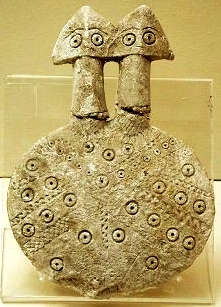 Fig. F11) Idol with two heads (extinct religion). Alabaster sculpture.
Fig. F11) Idol with two heads (extinct religion). Alabaster sculpture.
The disc-shaped body could allude to a solar deity. The anthropomorphic representation is all geometric: triangular heads, cylindrical necks, circular decorations of the body. The variations of shape in the imitation of the human figure are very fanciful. Probably it is a female deity, like the Venuses with two heads.
Height 5.2 cm .
Origin: Beycesultan, Turkey.
Dating: early third millennium BC.
Location: Museum of Anatolian Civilizations, Ankara, Turkey.
NEXT
Index
HOME PAGE
Copyright©1999-2020 by Museum of the Origins of Man, all rights reserved.






